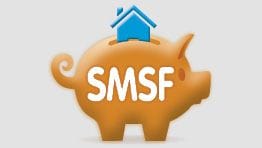Purchasing Property in a Self Managed Super Fund

Recent changes in the lending rules allow your super fund to borrow to buy property under certain arrangements.
One of the main reasons for this is that an individual can increase the size of their super fund assets using leverage and so have the potential to substantially increase their final superannuation balance using residential or commercial property investment.
Your SMSF can have investments in the following types of real property
- commercial property, this may include a factory, warehouse, business leased premises (also known as business real property) and
- residential property
Some of the SMSF rules and restrictions that apply include not being able to acquire a property from a person or entity that is related to a trustee member of your SMSF (so your super fund can't buy your own home from you). This restriction also applies to leasing the fund’s property to a person or entity related to a trustee or member of your SMSF (so you can't rent your super fund property to a family member or yourself). However, your SMSF is allowed to acquire from and lease business real property to a person or entity related to a trustee or member of your SMSF.
The first and most straightforward rule is that investments must be made and maintained on a strict commercial basis, that is buying and selling of assets must always reflect their true market value. Similarly, any income from these assets should always reflect a true market rate of return.
Borrowing or gearing your super into property must be done under very strict borrowing conditions called a 'limited recourse borrowing arrangement.
What is a Limited Recourse Arrangement?
A limited recourse borrowing arrangement can only be used to purchase a single asset, for example a residential or commercial property. While the rules do not restrict the type of asset that can be purchased, due to the requirements under the superannuation borrowing rules SMSFs have primarily borrowed money to purchase property investments.
Where an SMSF has borrowed money to buy an asset, this asset cannot generally be improved upon nor replaced while the loan is still outstanding. This means an SMSF cannot borrow to facilitate a property development. Similarly, because assets cannot be replaced, share investments cannot be actively traded – another reason why borrowing money to buy shares through an SMSF has not been popular.
Thirdly, in order to ensure that borrowing through your SMSF does not place other retirement investments held in your SMSF at risk, the asset that is purchased under a borrowing arrangement must be held in a specific holding trust until the loan is repaid. Further, the only SMSF asset that can be used as security for this loan is the asset that is held within this trust – hence the name Limited Recourse Borrowing Arrangements – which helps to protect other assets held inside your SMSF
Related Articles:
Property & Super - Loosening the Rules


)
)
)
)
)
)
 Quick Menu
Quick Menu

